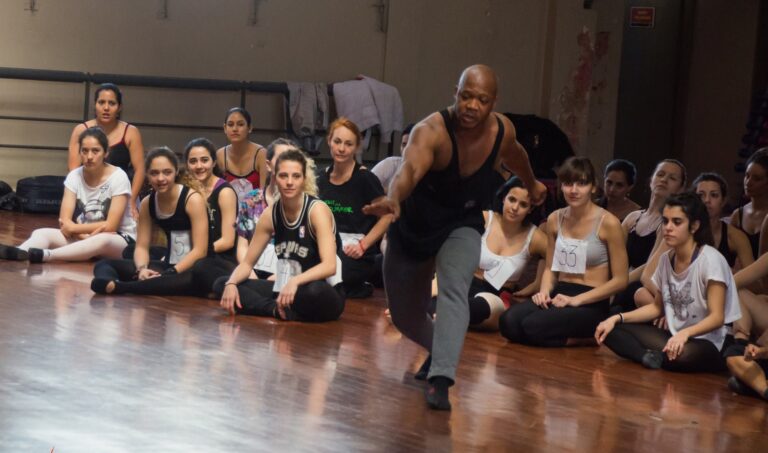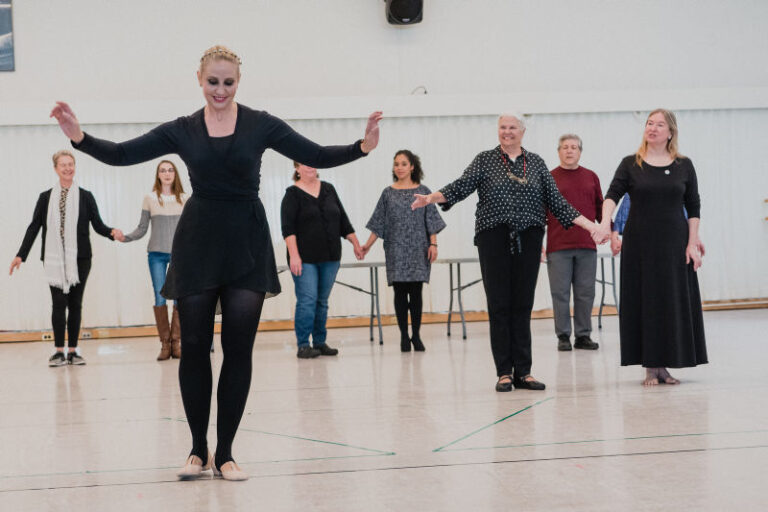Get more bang for your studio buck by hosting events and activities outside of regular class time.
Downtown Dance Factory’s birthday parties rake in extra revenue and help owners Hanne Larsen and Melanie Zrihen reach a wider pool of potential clients.
When “Dancing with the Stars” debuted on television nearly a decade ago, Corey Burns saw the potential for his own business, Burns Dance Studio. “Weddings are an anxious time for families, particularly if the wedding party isn’t accustomed to dancing, say, a waltz in front of an audience,” he says. Burns seized the opportunity to extend his Aiken, South Carolina, studio’s brand beyond its traditional target market. He put together a package for wedding choreography that includes lessons and a full routine. Besides bringing in extra revenue, it’s made him something of a local hero: A year or more after their weddings, clients tell him how their dance routine was the highlight of their ceremonies.
When you’re already paying certain fixed costs to run your studio, why not make it work harder for you, as Burns has? By maximizing the use of your space, either offering new activities yourself or renting it out as an event space to others, you extend its earning capacity well beyond typical class hours. And in addition to adding a new revenue stream—sometimes at a higher profit margin—you can raise your profile in the community and reach a wider pool of future students. Here’s how Burns and two other studios developed new, outside-of-the-box revenue streams.
Hosting Birthday Parties
Downtown Dance Factory
Owners: Hanne Larsen and Melanie Zrihen
Location: New York City
Years in business: five
Hanne Larsen and Melanie Zrihen met when their kids attended the same preschool. The women decided to fuse their skills—Larsen had run a dance studio in Australia and Zrihen had an MBA—to launch Downtown Dance Factory in their Tribeca neighborhood. Dance classes are their main business, but the addition of birthday parties has made a good side business, according to Zrihen.
“We knew from our own experience as moms that there was a demand for interesting, well-run birthday parties, and in downtown Manhattan, hardly anyone has room for that type of party at home,” says Larsen.
Initial investment Low: Tables, chairs and a helium tank totaled $3,000.
Ongoing projected expense DDF provides themed costumes, though clients bring their own refreshments. Studio-provided supplies run $4,000 to $5,000 per year, and instructors are paid by the hour to lead the party. Staff are paid to set up, work a party and clean up.
Projected revenues and profit Parties may be just a sideline (they bring in 8–10 percent of DDF’s yearly revenues), but they’re a profitable one.
Setting the price Zrihen and Larsen did their due diligence first (as you should with any new revenue stream): “We looked at comparable places to come in a little lower,” says Zrihen. “We did the math to make sure we wouldn’t lose money.” DDF’s basic package costs $650 and includes: 50 minutes of dance; 40 minutes for food and cake; supervision; teachers; setup and cleanup; paper products; balloons; a gift for the birthday child; and simple costumes (tutu and wings, cape and mask) for 10 kids. Each extra guest over 20 kids, up to 30 total, costs an additional $30.
Marketing All DDF promotional materials mention the studio’s party offerings. Larsen and Zrihen also keep track of their clients’ birthdays: “We market our clients with e-mails about parties, and we get a good response from that,” says Larsen. “Then other people attend and get exposed to us.”
Lesson learned “Initially, we weren’t confident in our formula, so when people made suggestions—like making the party a half-hour longer—we tried incorporating them, but things didn’t always run smoothly,” says Larsen. “Now that we know what works, we can deliver a great experience.”
Renting Out Studio Space
Jami Masters School of Dance
Owner: Jami Masters
Location: Charlotte, North Carolina
Years in business: 25
Jami Masters found that exercise instructors naturally turned to her when looking for a space to rent. “People would ask to use my space as a favor,” says Masters. “Then I realized I could make it a business.” Rental scenarios vary from one time to weekly or seasonal.
Masters hasn’t advertised in the five years she’s rented to clients. Word of mouth brings yoga and exercise professionals and those who just need studio space on the fly. Clients must sign a contract with a liability clause and put down a security deposit.
Financial benefits Any revenues are pure profit, since studio rentals occur outside regularly scheduled studio class time, when the space is otherwise dormant.
Initial investment None, except creating a contract for renters.
Ongoing projected expense Very low. “We’re already paying for maintenance—cleaning comes every night,” says Masters. “Any after-hours utility costs are not significant.”
Setting the price Fees are scaled on frequency of use. “A lot of it I base on figuring out what works for clients,” says Masters.
Marketing benefits Word of mouth remains key. In fact, Masters doesn’t want to market her rental services, because she’s afraid of becoming overbooked.
Lesson learned “I have clients sign a contract before they use the studio,” says Masters. “They have to provide their own liability insurance for their clients, since they’re not associated with the Jami Masters School of Dance. That way, if something happens, I’m not liable.”
Choreographing for Wedding Parties
Burns Dance Studio
Director: Corey Burns
Location: Aiken, South Carolina
Years in business: 34
When he observed the rising popularity of choreographed routines for weddings and life events, Corey Burns saw an opportunity to create a new revenue stream. He works with clients to develop unique choreography or just teach classic steps, like a waltz or fox-trot. Though many clients are former dance customers, the range of skills in any given wedding party varies considerably.
Burns only works with clients outside of regularly scheduled classes. “It may not bring in a lot of customers, but it doesn’t cost a fortune, and it creates goodwill,” he says. “It’s something clients remember and remind me of when they run into me later.”
Financial benefits Any revenues from the wedding-related business are pure profit, since rental occurs outside classes’ regularly scheduled studio time.
Initial investment Operating costs are already factored into the overall budget and fee schedule. Burns provides two copies of a custom cut of the client’s chosen music on CD.
Projected revenues and profit Burns doesn’t monitor additional revenue closely, but all monies go back into general funds, to buy new equipment or pay for repairs. “If my mother [who used to run the studio] wants to go to a costume show, it covers her travel costs,” he says.
Setting the price $125 for a 1 1/2- to 2-minute duet (mother/son, father/daughter or bride/groom); $250 for a 2- to 2 1/2-minute wedding party routine. Both packages include two to four sessions, depending on the routine’s complexity. “I let them pick out the concept, costumes and music,” explains Burns.
Marketing benefits “It leads to new business, since many of the clients have kids who are interested in taking dance class,” says Burns. Clients post wedding videos on social media and YouTube, which creates community buzz. Burns uses e-mail marketing with custom messaging. “At least four times a year customers will hear from us,” he says. “Even if they don’t open the e-mail, they see our name in the subject line.”
Lesson learned “With a lot of people in the party, scheduling issues arise,” says Burns. He has the bride and groom figure out mutually convenient times for everyone in the wedding party to meet for lessons. DT
Charlotte Barnard is a New York City writer who frequently covers retail and design.
Photos courtesy of Downtown Dance Factory



